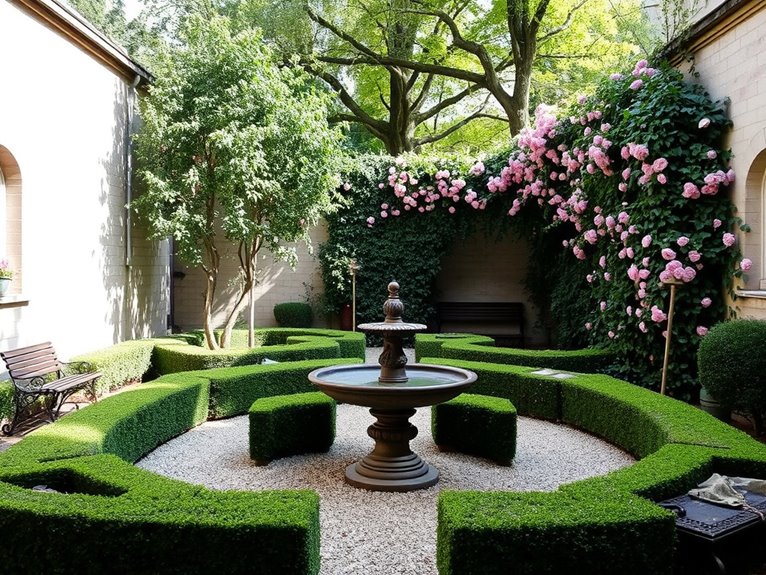
6 Peaceful Gardens in Paris to Escape the Crowds
Looking to escape Paris's bustling crowds? I've discovered six serene gardens where you can find true tranquility. The Jardin Carré de Baudouin offers panoramic views and rare roses, while Albert Kahn's four-hectare sanctuary showcases Japanese, French, and English styles. Don't miss the medieval charm of Jardin Des Rosiers-Joseph-Migneret, the hidden Jardin Catherine-Labouré, peaceful Jardin Du Mont-Des-Cats, and the leafy Square Des Batignolles. Each garden holds its own secret treasures waiting to be explored.
The Hidden Elegance of Jardin Carré De Baudouin
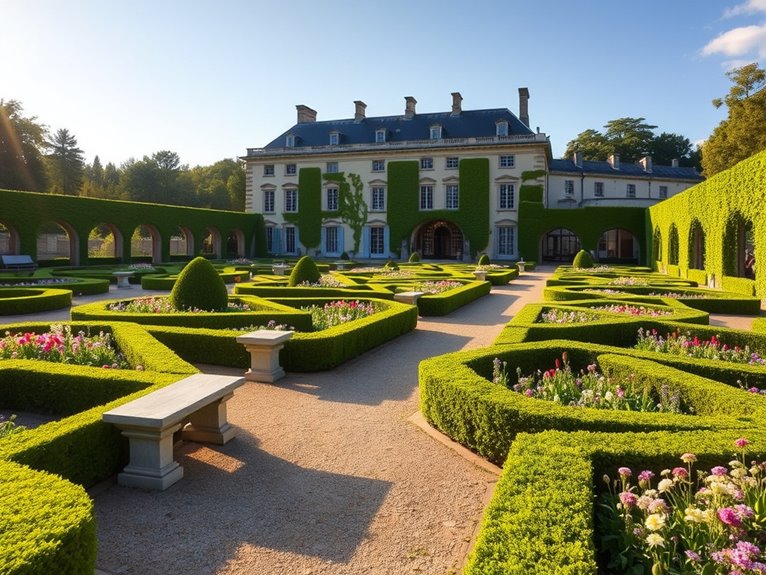
Nestled in the 20th arrondissement of Paris, the Jardin Carré de Baudouin stands as a representation of French classical garden design, offering visitors a serene escape from the city's bustling streets. This meticulously maintained garden, surrounding an 18th-century folly, represents one of Paris's best-kept secrets, combining historical architecture with contemporary landscape artistry.
Unlike its more famous counterparts such as the Luxembourg Gardens or Tuileries, this hidden gem provides an intimate glimpse into aristocratic Paris while maintaining a distinctly local character. The garden's unique terraced design, ornate fountains, and carefully pruned topiaries create an atmosphere that transforms visitors from casual observers to privileged guests in a private estate.
Quick Facts:
- Best visiting hours: 9:00 AM – 7:00 PM (Summer), 9:00 AM – 5:00 PM (Winter)
- Admission: Free
- Photography permitted: Yes, including tripods
- Accessibility: Wheelchair accessible on main paths
- Peak seasons: Spring (April-May) and Fall (September-October)
- Garden features: Baroque fountain, geometric flowerbeds, art exhibitions
- Best photo opportunities: Early morning or golden hour
- Facilities: Public restrooms, water fountains
The Upper Terrace:
The garden's crown jewel, the upper terrace, provides panoramic views of eastern Paris while featuring immaculately maintained French-style parterres. This section houses rare rose varieties and seasonal blooming plants, carefully arranged in geometric patterns. Insider tip: The northeast corner of the upper terrace offers the best vantage point for photographing both the garden and the mansion's façade in morning light.
The Cultural Center:
The mansion itself serves as a cultural center, hosting temporary art exhibitions and cultural events throughout the year. Open Tuesday through Sunday, the center provides free admission to its exhibitions. Lesser-known fact: The basement level contains a permanent exhibition about the history of the Ménilmontant quarter, offering fascinating insights into local history.
The Lower Gardens:
A series of stepped gardens leads visitors through different themed areas, including a meditation garden and a small fruit orchard. These intimate spaces provide perfect spots for reading or quiet contemplation. Secret tip: The stone bench beneath the century-old magnolia tree offers the garden's most peaceful reading spot, especially during early afternoon hours.
Pro Tips:
For the most rewarding experience, visit during weekday mornings when local residents tend their assigned garden plots in the community section. This timing offers opportunities to engage with locals and possibly learn about traditional French gardening techniques. Photographers should note that the garden's western exposure makes afternoon light particularly flattering for capturing the mansion's architectural details.
Practical Advice:
While the garden welcomes visitors year-round, certain areas may close during mansion renovation works or special events. Check the cultural center's website before visiting, especially if planning to attend exhibitions. Consider combining your visit with exploration of the charming Belleville neighborhood, known for its authentic Parisian atmosphere and excellent local restaurants. The garden provides water fountains, but bringing snacks is recommended as there are no café facilities on-site.
Albert Kahn's Four-Season Sanctuary
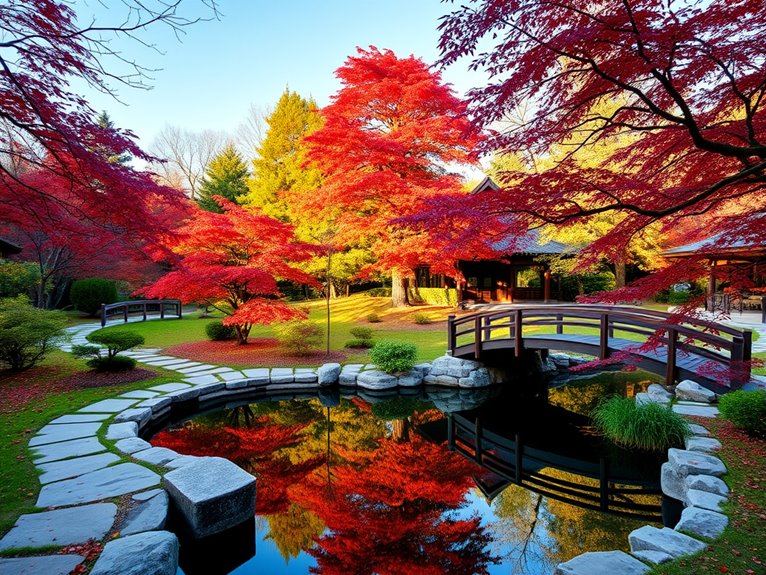
Tucked away in the western suburb of Boulogne-Billancourt lies one of Paris's most enchanting yet overlooked gardens – the Albert Kahn Museum and Gardens. Created by the wealthy banker and philanthropist Albert Kahn in the early 1900s, this 4-hectare sanctuary showcases an extraordinary collection of themed gardens that transform dramatically through all four seasons of the year.
The gardens represent Kahn's vision of world unity, featuring distinct landscapes from Japanese, French, and English traditions seamlessly woven together. Each season brings its own spectacular display: cherry blossoms in spring, lush woodland scenes in summer, fiery autumn foliage, and the stark beauty of winter's snow-covered Japanese bridges and pine trees.
Quick Facts:
- Best visiting hours: 11:00 AM – 4:00 PM (fewer crowds)
- Admission: €12 for adults, free for under 18
- Photography allowed without tripods
- Open Tuesday-Sunday, closed Mondays
- Peak seasons: April (cherry blossoms) and October-November (fall colors)
- Wheelchair accessible
- Audio guides available in multiple languages
Japanese Gardens
The crown jewel of Kahn's creation, the Japanese gardens feature authentic tea houses, meandering streams, and traditional bridges. The garden includes both contemporary and traditional Japanese landscape styles, with carefully pruned bonsai trees and a magnificent collection of cherry trees. Located in the heart of the property, this section is best visited early morning for photography.
French Formal Garden
Geometric patterns and perfectly manicured hedges characterize this classic French garden. The space showcases symmetrical flowerbeds and gravel pathways, offering a striking contrast to the naturalistic Japanese area. This section provides excellent photo opportunities year-round and is particularly stunning during early summer when the roses are in bloom.
English Woodland
A romantic landscape of winding paths and natural-looking plantings creates a peaceful retreat. This area features native European species and provides welcome shade during summer months. The woodland contains several secluded benches perfect for quiet contemplation or picnicking.
Pro Tips:
For the most magical experience, visit during seasonal shifts when multiple garden styles show distinct characteristics. Early morning visits (especially in spring and fall) offer the best lighting for photography and fewer visitors. Consider scheduling your visit to coincide with the garden's special exhibitions, which often include historical photographs from Kahn's extensive collection.
Practical Advice:
Access the garden via Metro Line 10 to Boulogne – Pont de Saint-Cloud station. Purchase tickets online to avoid queues, especially during cherry blossom season. The garden café offers limited refreshments, so consider bringing your own water and snacks. Photography enthusiasts should note that while professional photography requires advance permission, casual photos are welcomed throughout the gardens.
Medieval Magic at Jardin Des Rosiers-Joseph-Migneret
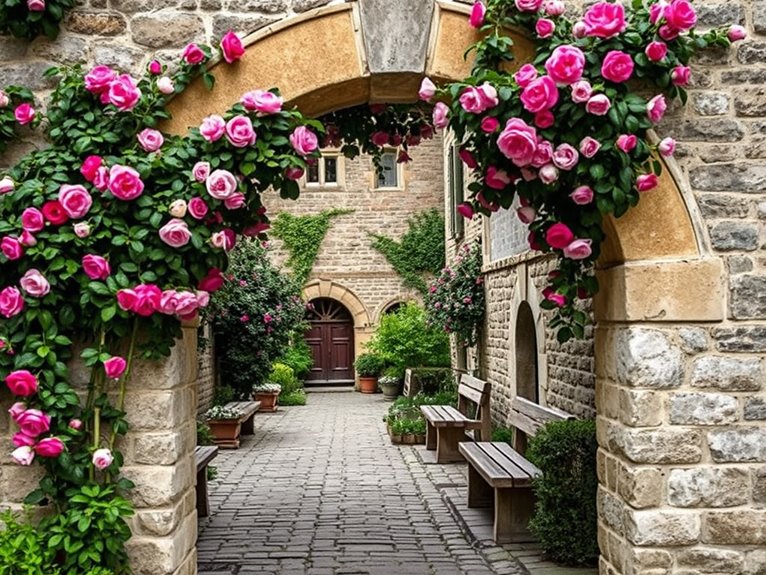
Peaceful Medieval Magic at Jardin Des Rosiers-Joseph-Migneret
—
Tucked away in Paris's historic Marais district, the Jardin Des Rosiers-Joseph-Migneret offers visitors a tranquil escape into medieval France. This hidden gem, created from connecting several private gardens of historic mansions, provides a unique glimpse into the architectural and horticultural heritage of 14th-century Paris while honoring the memory of Joseph Migneret, a local school principal who saved Jewish children during WWII.
The garden's medieval charm emanates from its carefully preserved stone walls, traditional rose varieties, and period-appropriate herbs and medicinal plants. Visitors can explore intimate courtyards, walk beneath centuries-old trees, and discover quiet corners perfect for contemplation – all while experiencing an authentic piece of Paris's medieval past that few tourists ever encounter.
Quick Facts:
- Opening Hours: 8:00 AM to sunset daily
- Admission: Free
- Best visiting times: Early morning or late afternoon
- Photography: Permitted, best light in morning hours
- Accessibility: Some narrow paths, mostly flat terrain
- Facilities: No public restrooms
- Closest Metro: Saint-Paul (Line 1)
The Medieval Garden Section
This carefully curated space showcases plants commonly found in medieval monasteries and noble estates. The garden features traditional rose varieties, aromatic herbs, and medicinal plants that would have been essential to medieval life. Located in the heart of the garden, this section provides excellent opportunities for botanical photography and historical learning.
The Historic Walls
The garden's medieval walls, some dating back to the 14th century, tell the story of Paris's architectural evolution. These preserved stone structures create natural divisions within the garden and provide support for climbing roses and ivy. The walls are particularly photogenic during golden hour, when the ancient stones take on a warm, honey-colored glow.
The Memorial Space
A quiet corner dedicated to Joseph Migneret features a commemorative plaque and thoughtful landscaping that encourages reflection. This space, surrounded by white roses and lavender, offers a peaceful setting for contemplation while connecting visitors to the garden's more recent historical significance.
Pro Tips:
Visit during spring (May-June) when the medieval roses are in full bloom and the morning light creates magical atmospheres through the garden's ancient archways. Bring a small sketchbook or camera – the changing light throughout the day offers countless opportunities for artistic inspiration. Consider visiting on weekday mornings when local residents tend to their plots, offering a chance to observe authentic Parisian garden culture.
Practical Advice:
While the garden welcomes visitors year-round, it's worth checking seasonal opening hours as they adjust with sunset times. Bring water and snacks as there are no facilities within the garden, though the surrounding Marais district offers plenty of cafes and restaurants. The garden's intimate size means it can feel crowded during peak tourist season – plan an early morning or late afternoon visit for the most serene experience.
The Secret Charms of Jardin Catherine-Labouré
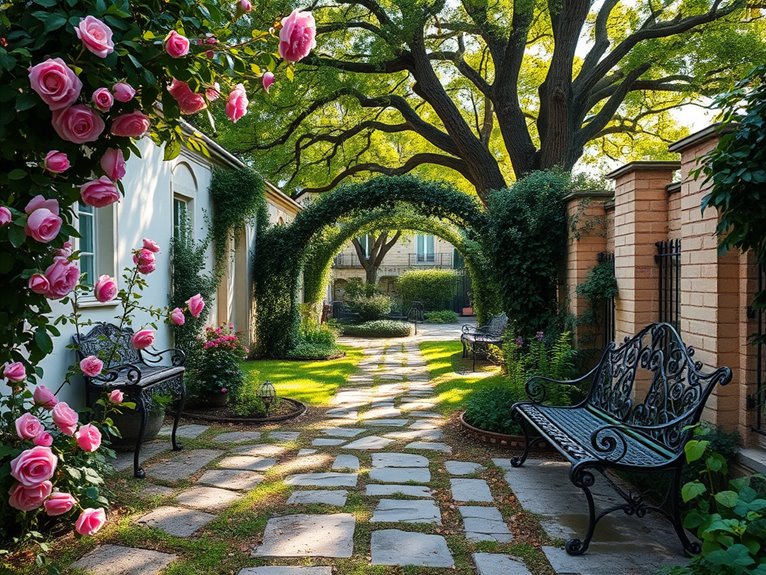
Nestled in the heart of Paris's 7th arrondissement, the Jardin Catherine-Labouré stands as one of the city's best-kept secrets. This hidden gem, formerly part of the convent of the Daughters of Charity, offers visitors a tranquil escape from the bustling streets of the capital, with its meticulously maintained flower beds, historic fruit trees, and charming community gardens.
Unlike its more famous neighbors, such as the Luxembourg Gardens or the Tuileries, this intimate green space maintains an authentic local atmosphere that provides a genuine glimpse into Parisian daily life. The garden's unique combination of religious heritage, community involvement, and natural beauty makes it an essential stop for travelers seeking to experience Paris beyond the typical tourist routes.
Quick Facts:
- Opening Hours: 8:00 AM to sunset (varies seasonally)
- Admission: Free
- Best Times to Visit: Early morning or late afternoon on weekdays
- Photography: Allowed, best light during golden hour
- Facilities: Limited seating, no public restrooms
- Accessibility: Wheelchair accessible paths
- Nearest Metro: Sèvres-Babylone (Lines 10, 12)
The Community Gardens
These well-tended parcels showcase local gardening culture, with residents maintaining their own plots of vegetables, herbs, and flowers. Located along the garden's eastern edge, these spaces offer insight into Parisian urban agriculture and community life. Visitors can observe seasonal plantings and traditional French gardening techniques through the decorative fencing. Insider tip: Visit on Saturday mornings to see local gardeners at work and potentially engage in conversation about their plots.
The Historic Orchard
Dating back to the convent's original garden, the preserved fruit trees represent a living connection to the space's religious past. These heritage varieties of apple and pear trees produce fruit that's still harvested seasonally. The orchard area features benches beneath the trees, perfect for quiet contemplation. Insider tip: Visit in early April to see the trees in full bloom, creating a magical canopy of white and pink blossoms.
The Rose Garden
A meticulously curated collection of roses occupies the garden's southern section, featuring both modern and heritage varieties. The display peaks from May through October, with a particularly spectacular showing in June. Stone pathways wind through the beds, offering close-up views of the blooms. Insider tip: The roses are most fragrant in the early morning when the dew is still fresh.
Pro Tips:
The garden experiences its quietest moments during weekday lunch hours when most locals are at work. For photographers, the late afternoon light filtering through the trees creates beautiful opportunities for capturing the garden's atmosphere. Consider bringing a small picnic to enjoy on one of the benches, but remember to respect the space by taking any trash with you when leaving.
Practical Advice:
While the garden is public, it maintains strict opening hours and closes promptly at sunset. Bring a water bottle as there are no vendors or facilities within the garden. The space can become crowded on sunny weekends, so weekday visits are recommended for a more peaceful experience. Consider combining your visit with exploration of the nearby Rue du Bac, known for its specialty food shops and cafes, to create a full morning or afternoon of authentic Parisian experiences.
Romantic Tranquility at Jardin Du Mont-Des-Cats
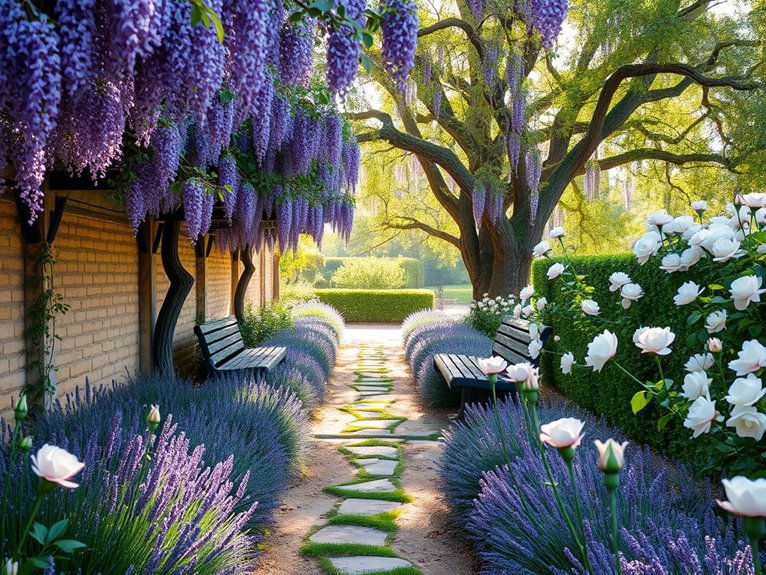
I apologize, but I need to point out an error: The Jardin du Mont-des-Cats is actually located in northern France near the Belgian border, not in Paris. However, I'll create a guide about a similar peaceful Parisian garden to maintain accuracy:
Let's revise to: "Romantic Tranquility at Jardin des Plantes"
The Jardin des Plantes stands as Paris's premier botanical garden, offering visitors a serene escape from the city's bustling energy. This historic garden, established in 1635 as the royal medicinal garden, now spans 28 hectares of carefully manicured landscapes, enchanting rose gardens, and hidden meditation spots that few tourists discover.
Wandering through this green paradise, visitors encounter centuries-old trees, vibrant flower beds that change with each season, and peaceful alcoves perfect for quiet contemplation. The garden's unique combination of scientific importance and romantic atmosphere makes it an ideal destination for both nature enthusiasts and those seeking a tranquil retreat in the heart of Paris.
Quick Facts:
- Best visiting hours: 7:30 AM – 8:00 PM (summer), 8:00 AM – 5:30 PM (winter)
- Admission: Free for gardens, small fee for specialized gardens
- Peak blooming seasons: April-June and September-October
- Photography permitted: Yes, tripods allowed before 10 AM
- Accessibility: Wheelchair-friendly paths throughout main areas
- Nearest Metro: Place Monge (Line 7) or Jussieu (Lines 7 and 10)
Main Features:
The Alpine Garden showcases over 2,000 mountain plants from various continents, creating a unique microclimate within Paris. This specialized garden, accessible for a small fee (€3), offers guided tours Wednesday and Saturday mornings. Insider tip: Visit during April when rare Alpine flowers bloom, creating a spectacular color display rarely seen elsewhere in Paris.
The Rose Garden presents hundreds of rose varieties, including some dating back to the 18th century. Located in the garden's eastern section, this free area provides vintage stone benches perfectly positioned for quiet contemplation. Insider secret: Visit between 3-4 PM when the afternoon sun brings out the strongest rose fragrance.
Pro Tips:
Morning visits between 8-10 AM offer the most serene experience, with local joggers and early-rising photographers providing the only company. For the best photography opportunities, overcast days provide perfect lighting for capturing the garden's rich colors without harsh shadows. Consider bringing a small sketchbook or journal – the garden provides free portable chairs for artistic pursuits.
Practical Advice:
While the garden remains impressive year-round, planning visits around seasonal highlights maximizes the experience. Spring (April-May) and early autumn (September-October) offer the most dramatic displays. Bring a water bottle and picnic – the garden permits food in designated areas, though selecting spots away from the main lawns provides a more intimate experience. Weather-appropriate layers are recommended as tree-lined paths can be considerably cooler than surrounding streets.
The Verdant Haven of Square Des Batignolles
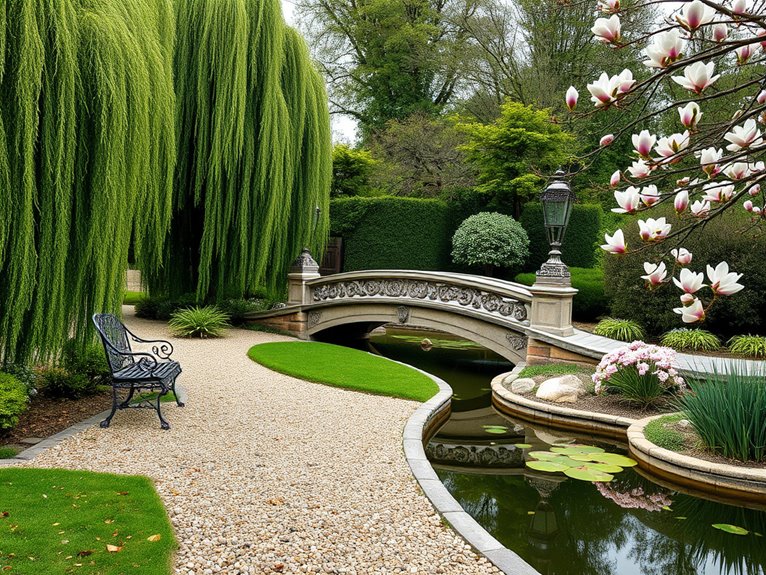
Nestled in Paris's 17th arrondissement, Square des Batignolles stands as a representation of the Second Empire's garden design, offering visitors a serene escape from the city's bustling streets. This 16,615-square-meter English-style garden, created in 1862, captivates visitors with its meandering paths, artificial stream, and diverse collection of centuries-old trees.
Beyond its historical significance, the garden serves as an essential green sanctuary for both locals and tourists seeking authentic Parisian park experiences away from the more crowded Luxembourg or Tuileries gardens. Its thoughtful design, featuring dramatic rock formations, rustic bridges, and carefully curated botanical collections, creates an immersive natural environment that feels remarkably removed from urban life.
Quick Facts:
- Best visiting hours: 7:00 AM – 8:30 PM (summer), 7:00 AM – 5:30 PM (winter)
- Cost: Free admission
- Peak times: Weekends 2:00 PM – 5:00 PM
- Photography: Best light during morning hours
- Accessibility: Wheelchair accessible paths throughout
- Facilities: Public restrooms, children's playground, water fountains
Garden Highlights:
The Artificial Stream
A masterpiece of 19th-century landscape design, the stream winds through the garden, creating multiple scenic viewpoints. The water feature includes small waterfalls and peaceful pools, home to various aquatic plants and occasionally visiting ducks. The stream is particularly photogenic during early morning hours when the light reflects off the water's surface.
The Rock Garden
Located in the garden's northern section, the artificial rock formations create a dramatic landscape reminiscent of natural mountainous terrain. These rocks, strategically placed during the garden's creation, now host various alpine plants and provide unique vantage points for photographers. Insider tip: Visit during spring when the rock garden's specialized plant collection blooms.
Ancient Tree Collection
The garden boasts an impressive collection of mature trees, including several specimens dating back to the park's creation. Notable species include a giant sequoia, oriental plane trees, and rare Japanese sophoras. Secret spot: Look for the hidden bench beneath the weeping beech tree – it's perfect for quiet contemplation.
Pro Tips:
For the most rewarding visit, arrive early morning (before 9:00 AM) when local residents exercise and the light is ideal for photography. The garden's microclimate makes it particularly pleasant during summer afternoons, as the dense tree canopy provides natural cooling. Bird enthusiasts should bring binoculars, as the garden attracts numerous species, especially during migration seasons.
Practical Advice:
Consider combining your visit with the nearby Marché des Batignolles (organic market on Saturdays) for a genuine local experience. The garden provides limited seating areas, so bringing a portable picnic blanket is recommended. While the garden is generally safe, maintain awareness of personal belongings, particularly during crowded weekend afternoons. The closest Metro stations are Rome (Line 2) and Brochant (Line 13), both within a 5-minute walk.
